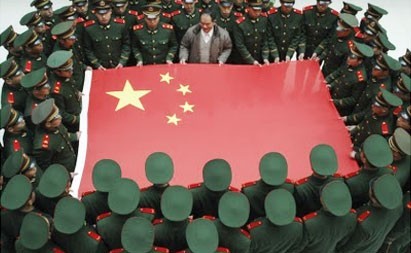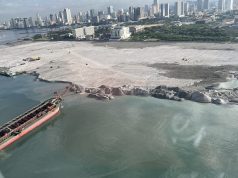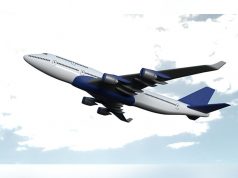(Editor’s note: In view of the presentations made by the Philippines before the UN arbitral tribunal on the country’s suit against China regarding the West Philippine Sea territorial dispute, key aspects of China’s history can help produce insights into the dynamics of the rising superpower’s possible future relations with its neighbors, specifically the Philippines. Author Cesar Polvorosa Jr. is a business school professor of economics, world geography, and international business management in Canada. He is also a published writer in economics, business, and literature.)
“The Mediterranean is the ocean of the past, the Atlantic, the ocean of the present, and the Pacific, the ocean of the future.” – John Jay, U.S. Secretary of State, 1889
The economic transformation of China is simply stupendous. During the past quarter century, China’s GDP growth averaged a sizzling 9% per annum. From the late 1970s to 2010, the size of the Chinese economy grew more than five times which altered the lives of majority of its 1.4 billion people – almost a fifth of humanity in a blink of an eye in historical terms. From an underdeveloped country China’s GDP per capita income has reached $12,900 as of 2014 (PPP) (CIA World Factbook). China is now the number one trading country in the world.
The downside of heady economic growth though had been severe pollution levels and worsening income inequality – ironic in a country that prided itself on socialist egalitarianism.
The magnitude of such performance has some staggering implications. Thus, as an example consider the following: In 2014, the Chinese economy grew by 9.4% to reach $10.36 trillion (GDP current prices) (IMF) compared to the $9.47 trillion of the previous year. The increment of $890 billion (10.36 less 9.47 in trillions) is the size of the Netherlands economy or an addition of three Philippine-sized economies in just one year of growth.
Such profound developments in China herald the emergence of the “Pacific Century” or the almost universal expectation that the East Asian economies principally China will dominate the world of the 21st century. Thus, the 20th century was the “American Century” when the US was the superpower (and still is) while the 19th century was referred to as the “British Century” when Britain ruled a far-flung overseas empire. Each time, the country with the world’s biggest economy became preeminent in global affairs – in business, military, culture, diplomacy, and political spheres. Thus, English became the lingua franca of the world because of the legacy of empire of the British and spread in turn by the Americans. Anglo-Americans heavily influenced the world’s production of knowledge. The US, which spends more on defense than the next seven countries combined, has often been assertive militarily to advance its national interests as defined by its leaders – e.g. Afghanistan and Iraq. Britain cut a bloody swath to create a vast overseas empire especially in South Asia and Africa.
Thus, as China is poised to grab the mantle of economic leadership from the US, the issue is how will China be as a superpower? By purchasing power parity (PPP) calculations of the IMF, World Bank and CIA, China is already the biggest economy in the world. So what happens as China displaces the US as the world’s number one economy?
Having the biggest economy translates into possessing huge resources to build up the armed forces. How will China behave as a superpower when in 2035 it is expected that its defense expenditures will exceed the United States? (estimate of R.S., Kalha, Institute for Defense Study and Analysis comment 17 Jan. 2015). What will be its implications on the world but especially on the Philippines with which it is embroiled in a territorial dispute?
The history of the country is always a guide to its possible future. In the case of China it can offer us a glimpse of its superpower future by giving us insights into the dynamics of its past glories, struggles, priorities, power shifts, and major endeavors.
The great divergence and convergence
This emergence of China (including India) as a superpower in the 21st century comprises the compelling global narrative of the end of the existing World Order and the coming of a new one. Famed British historian Niall Ferguson (6 Killer Apps) referred to the time when the Europeans developed way ahead of the rest of the world starting around the 1500s as the “Great Divergence.” Now, the rest of the world particularly China and India are catching up with the West in a new “Great Convergence.”
In fact, for much of the past millennia China had been paramount in global affairs far longer than the West. While Egypt and Mesopotamia can claim to be the oldest civilizations, China is arguably the longest continuous civilization. Thus, from this perspective, China in the early 21st century is only reverting to its former hegemony.
Such a wealth of historical experience should confer on China the collective wisdom of the Ages, the virtues of good governance, maturity, and grace in its relationship with other neighboring countries. What does the historical and contemporary evidence suggest?
In its long and rich history, China produced exemplary philosophers who played vital roles in guiding both the morality and pragmatism of individual and state behavior. The most prominent of these was Confucius who emphasized personal and governmental morality, correctness of social relationships, justice, and sincerity. For Confucius, what characterized superior rulership was the possession of de or “virtue” which was conceived of as a kind of moral power that allows one to win a following without recourse to physical force (Stanford Encyclopedia of Philosophy). Confucianism had been so influential in East Asia in general that the region is sometimes referred to as the “Confucian Crescent” (e.g. as discussed in The East Asia Edge by Hofheinz and Calder).
(Editor’s note: Schedule of posting Parts 2 to 4 has been changed.)










